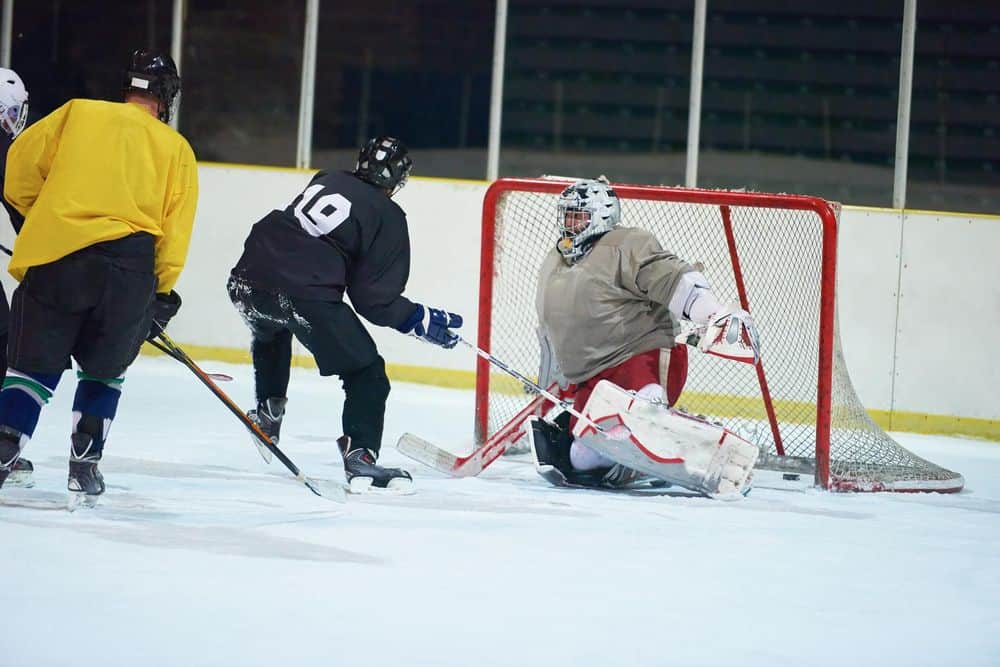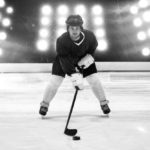In the fast-paced and physically demanding world of hockey, the line between aggressive play and criminal behavior can often become blurred. One particularly contentious issue is fighting, a longstanding tradition in the sport.
With player safety and legal ramifications at the forefront, the question arises: Can hockey players be charged with assault?
This article delves into the penalties, the National Hockey League’s stance, the unwritten rules, and the evolving landscape of the sport, shedding light on the legal and ethical complexities surrounding fighting in hockey.
Penalties and Consequences for Fighting
When it comes to fighting in hockey, players can face penalties and consequences. Engaging in a fight on the ice results in a five-minute major penalty, which can have significant implications for a player’s team.
In addition to the immediate penalty, fighters may also face fines and suspensions from the league. The NHL takes player safety seriously and has implemented rules to mitigate the risks associated with fighting.
Players are required to wear approved face masks or shields during fights to protect themselves from injury. Referees also have the authority to impose additional penalties or even eject players from the game if they deem the fight to be excessively dangerous.
It is important for players to understand the legal consequences of fighting and prioritize player safety in order to maintain a safe and enjoyable game for all participants.
NHL’s Stance on Fighting
The NHL takes a cautious stance on fighting in hockey but allows it as part of the game. While fighting is not permitted in hockey, it is still a prevalent aspect of the sport.
The legal implications of fighting in hockey are complex. Players can face fines, suspensions, and penalties for engaging in fights. Assault charges can also result in jail time for players involved in violent altercations on the ice.
The public perception of fighting in hockey varies. Some fans view it as an integral part of the game, while others believe it has no place in a sport that promotes skill and fair play.
The NHL’s decision to allow fighting reflects a delicate balance between maintaining the tradition of the sport and addressing concerns regarding player safety and the overall image of the game.
Unwritten Rules and Norms of Fighting
Fighting in hockey is governed by unwritten rules and norms that dictate the acceptable behavior and conduct during altercations on the ice. These unwritten rules are often referred to as “The Code” and are deeply ingrained in the culture of the sport. While fighting is not officially permitted in hockey, it is tolerated to a certain extent by referees and the NHL. However, there are legal consequences for players who engage in fights, both on and off the ice. In terms of player safety, fighting can lead to serious injuries, including concussions and long-term brain damage. Despite the potential risks, fighting continues to be a part of the game, with players using it as a form of retaliation or to protect their teammates. The following table highlights some of the key unwritten rules and norms of fighting in hockey:
| Unwritten Rules and Norms of Fighting |
|---|
| Dropping gloves to signal intent |
| Not dropping gloves can lead to more serious repercussions |
| Referees usually allow fights to occur to maintain the atmosphere |
| Retaliation is a primary motivator for fights in ice hockey |
| Fighters receive at least five minutes in the penalty box |
It is important to note that while fighting is a part of the game, players can face fines, suspensions, and other penalties for engaging in altercations on the ice. Additionally, off-ice incidents involving violence can result in legal repercussions, such as assault charges, which can lead to jail time for players. The NHL has implemented a domestic violence policy to address such issues and enforce penalties for players involved in such cases. Overall, while fighting remains a controversial aspect of hockey, the sport continues to grapple with finding a balance between its historical roots and the importance of player safety.
NHL’s Domestic Violence Policy
NHL’s implementation of a domestic violence policy addresses the issue of off-ice violence and enforces penalties for players involved in such cases. The policy aims to ensure that players are held accountable for their actions and that victims receive the support they need.
Here are four key aspects of the NHL’s domestic violence policy:
- Mandatory suspensions: First-time offenders face a mandatory suspension of at least six games. Subsequent offenses result in longer suspensions, providing a clear deterrent for players.
- Counseling programs: Players involved in domestic violence incidents are required to undergo counseling and treatment programs. This not only helps the players address their behavior but also emphasizes the importance of rehabilitation and personal growth.
- Appeals process: High-profile cases, like Slava Voynov’s, have been appealed under the policy. This ensures that the disciplinary actions taken are fair and consistent.
- Legal consequences: In addition to the NHL’s penalties, assault charges can result in legal consequences, including possible jail time for players. This further emphasizes the seriousness of domestic violence and the need for accountability.
The NHL’s domestic violence policy reflects a commitment to address off-ice behavior, support victims, and promote a safe and respectful environment within the league.
Evolution of Hockey and Incidents
As hockey has evolved over the years, incidents on the ice have shed light on the sport’s history of brute force and intimidation. The evolution of fighting techniques in hockey is evident, as the game has shifted its emphasis towards speed and skill.
However, the sport’s past reliance on brute force and intimidation cannot be ignored. Dangerous incidents on the ice have occurred, resulting in serious injuries or even death. These incidents have prompted discussions about player safety and the role of fighting in the game.
While fighting has declined in recent years, it remains a controversial aspect of hockey. Comparisons can be drawn to other team sports, where fighting is not tolerated to the same extent. The NHL’s commitment to player safety and the implementation of strict penalties reflect the ongoing efforts to address these issues.
Comparison to Other Sports
In comparison to other team sports, the acceptance of fighting in hockey has been a subject of scrutiny and debate. Here is a comparison of the cultural acceptance of fighting in hockey versus other sports, as well as the impact of fighting on player safety and long-term health:
- Cultural acceptance: Fighting is deeply ingrained in the culture of hockey, with ‘The Code’ governing the unwritten rules of fighting. In contrast, other team sports, such as basketball or soccer, strictly prohibit fighting and consider it a violation of the game’s spirit.
- Impact on player safety: Fighting in hockey poses significant risks to player safety. The combination of physicality and the use of ice skates can lead to severe injuries, including concussions, broken bones, and long-term brain damage. Other team sports prioritize player safety and have implemented measures to reduce the risk of physical altercations.
- Impact on long-term health: The repetitive head trauma from fighting in hockey can have long-term consequences for players’ health. Studies have linked repeated concussions to chronic traumatic encephalopathy (CTE), a degenerative brain disease. In comparison, other team sports focus on minimizing head injuries and prioritize player longevity.
- Overall approach: While hockey has historically accepted fighting as part of the game, other team sports prioritize fair play and sportsmanship. The comparison highlights the need for ongoing discussions on the role of fighting in hockey and its impact on player safety and long-term health.
Legal Definition of Assault in Hockey
The legal definition of assault in hockey varies depending on the jurisdiction and the specific circumstances of the incident. Factors such as intent, level of violence, and potential harm inflicted are considered in assault charges. Famous assault cases in hockey have shed light on the legal boundaries of the sport. For instance, in 2000, Marty McSorley of the Boston Bruins was charged with assault for striking Donald Brashear of the Vancouver Canucks with his stick. McSorley was convicted and received an 18-month probation. Another notable case is Todd Bertuzzi’s assault on Steve Moore in 2004, which resulted in Moore suffering a career-ending injury. Bertuzzi faced criminal charges and was eventually sentenced to probation and community service. These cases demonstrate that even in the context of a contact sport like hockey, there are limits to acceptable conduct and players can face legal consequences for crossing those boundaries.
| Factors considered in assault charges | Famous assault cases in hockey | Jurisdiction |
|---|---|---|
| Intent | Marty McSorley’s attack on Donald Brashear | Boston |
| Level of violence | Todd Bertuzzi’s assault on Steve Moore | Vancouver |
Factors Considered in Assault Charges
Factors to consider in assault charges against hockey players include the intent, level of violence, and potential harm inflicted during the incident. These factors play a crucial role in determining the legal consequences a player may face and ensuring player safety.
Here are the key points to consider:
- Intent: The prosecution must establish that the player intended to cause harm or acted recklessly, knowing that harm could result from their actions.
- Level of Violence: The severity and nature of the player’s actions are evaluated. This includes factors such as the use of excessive force, intent to injure, or engaging in particularly dangerous behavior.
- Potential Harm: The extent of the victim’s injuries and the potential for long-term damage are taken into account. This involves examining medical reports, testimonies, and expert opinions.
- Legal Consequences: Depending on the severity of the incident, players can face various consequences, including fines, suspensions, criminal charges, or civil lawsuits. These consequences aim to deter future acts of violence and prioritize player safety.
Famous Assault Cases in Hockey
Several high-profile assault cases in hockey have shed light on the legal consequences that players can face for their actions on the ice. These cases have sparked discussions about the legal definition of assault in hockey and the boundaries of acceptable behavior on the rink. Here are three famous assault cases that have made headlines in the hockey world:
| Case | Description | |
|---|---|---|
| Todd Bertuzzi Incident | In 2004, Todd Bertuzzi, then a player for the Vancouver Canucks, assaulted Steve Moore, a player for the Colorado Avalanche, during a game. Bertuzzi punched Moore from behind, causing him serious injuries, including three fractured vertebrae. Bertuzzi was charged with assault causing bodily harm and was sentenced to probation and community service. | |
| Marty McSorley Incident | In 2000, Marty McSorley, a player for the Boston Bruins, assaulted Donald Brashear, a player for the Vancouver Canucks, by hitting him in the head with his hockey stick. McSorley was charged with assault with a weapon and was found guilty. He received an 18-month conditional discharge and was suspended from the NHL indefinitely. | |
| Dale Hunter Incident | In 1993, Dale Hunter, a player for the Washington Capitals, assaulted Pierre Turgeon, a player for the New York Islanders, by checking him from behind after he scored a goal. Turgeon suffered a separated shoulder as a result. Hunter was suspended for 21 games and fined $150,000. |
These cases highlight the serious consequences that players can face for their actions on the ice. While hockey is known for its physicality, there are limits to acceptable behavior, and crossing those limits can result in legal repercussions.
Impact of Assault Charges on Players’ Careers
Assault charges can have significant ramifications on the careers of hockey players, potentially leading to suspensions, fines, and even jail time. The impact on players’ careers goes beyond the legal consequences, as it can also affect their reputation and mental health.
Here are four ways assault charges can impact players:
- Damage to reputation: Assault charges can tarnish a player’s image and reputation, leading to loss of endorsements, sponsorship deals, and public support. It may also affect their standing within the hockey community and impact future opportunities.
- Suspension and fines: The league authorities may impose suspensions and fines on players convicted of assault, further hindering their playing time and financial stability.
- Mental health implications: Dealing with assault charges can be emotionally and mentally draining for players. The stress, anxiety, and public scrutiny can have long-lasting effects on their mental well-being, affecting their performance on and off the ice.
- Future career prospects: Players with assault charges may find it challenging to secure contracts or find teams willing to take them on. The stigma associated with such charges can limit their opportunities and hinder their professional growth.
It is crucial for players to understand the potential consequences of their actions and make responsible choices to avoid jeopardizing their careers and personal lives.
Conclusion and Takeaways
In summary, it is important for hockey players to be aware of the potential consequences of their actions, as assault charges can have far-reaching impacts on their careers and personal lives. Beyond the legal ramifications, players involved in fights may also experience psychological impacts. The intense physicality and aggression involved in fighting can lead to feelings of stress, anxiety, and even post-traumatic stress disorder. It is crucial for players to prioritize their mental health and seek support when needed.
Additionally, the role of the media in shaping public perception of fighting in hockey cannot be overlooked. Media coverage often focuses on the violence and brutality of fights, which can further perpetuate the idea that fighting is an acceptable part of the sport. This can create a culture where players feel pressure to engage in fights in order to fit in or meet certain expectations. It is essential for the media to provide balanced and nuanced coverage that highlights the negative consequences of fighting, both for the individuals involved and for the overall image of the sport.
Frequently Asked Questions
How Do Referees Determine Additional Penalties or Ejections During a Fight in Hockey?
Referees in hockey have the discretion to impose additional penalties or ejections during a fight based on the severity of the altercation and the rules outlined by the league. Penalty enforcement aims to maintain fair and safe gameplay.
What Are Some of the Unwritten Rules That Govern Fighting in Hockey?
In hockey, fighting is subject to the unwritten rules known as ‘The Code’. These rules govern player conduct and maintain a balance between physicality and player safety.
How Does the Nhl’s Domestic Violence Policy Handle High-Profile Cases?
The NHL’s approach to player suspensions in high-profile domestic violence cases involves mandatory suspensions, counseling, and treatment programs. These cases can have a significant impact on public perception of the league and its commitment to addressing such issues.
How Has the Acceptance of Fighting in Hockey Compared to Other Team Sports?
The acceptance of fighting in hockey has varied compared to other team sports, reflecting cultural differences. While it has traditionally been part of the game, concerns about player safety have led to increased scrutiny and calls for stricter penalties.
What Are Some Examples of Dangerous Incidents on the Ice Involving Hockey Players?
Some dangerous incidents on the ice involving hockey players include head injuries and stick infractions. These incidents have resulted in serious consequences, highlighting the need for player safety and stricter regulations in the sport.
Conclusion
In conclusion, the issue of whether hockey players can be charged with assault remains complex and controversial.
While fighting has long been a part of the sport’s culture, there is an increasing focus on player safety and the potential legal implications.
The NHL’s stance on fighting, unwritten rules and norms, and domestic violence policy all play a role in shaping the boundaries of aggressive play.
Ultimately, the evolution of hockey and incidents on the ice continue to shape the discussion surrounding assault charges in the sport.









